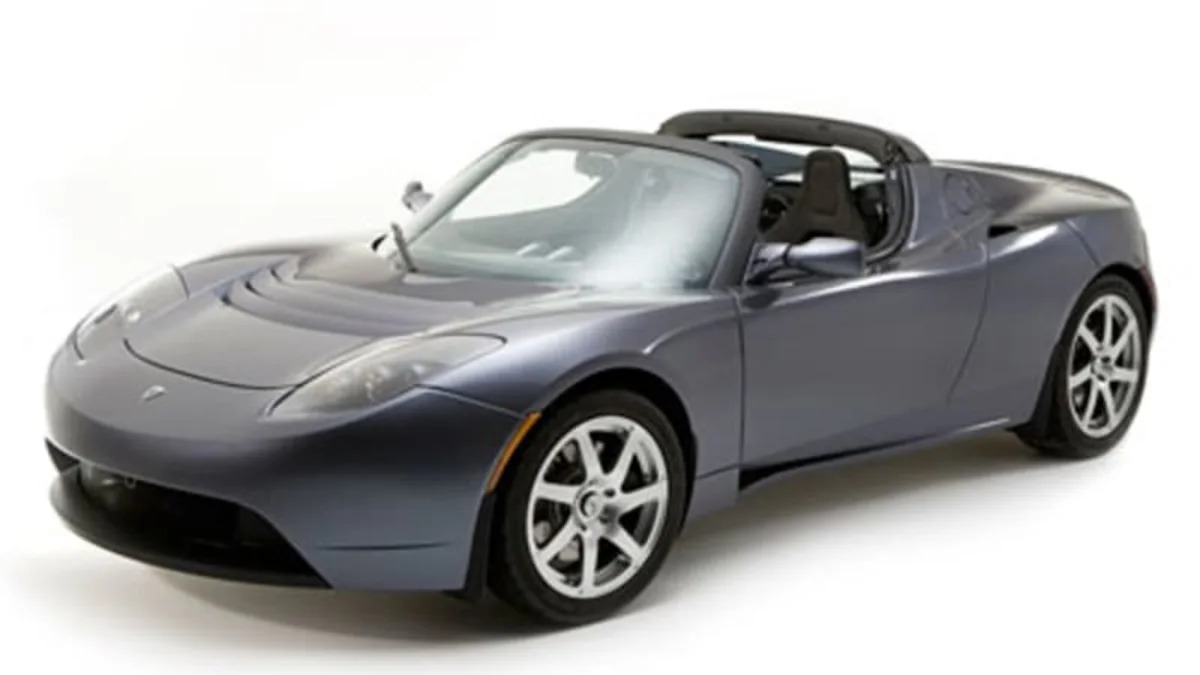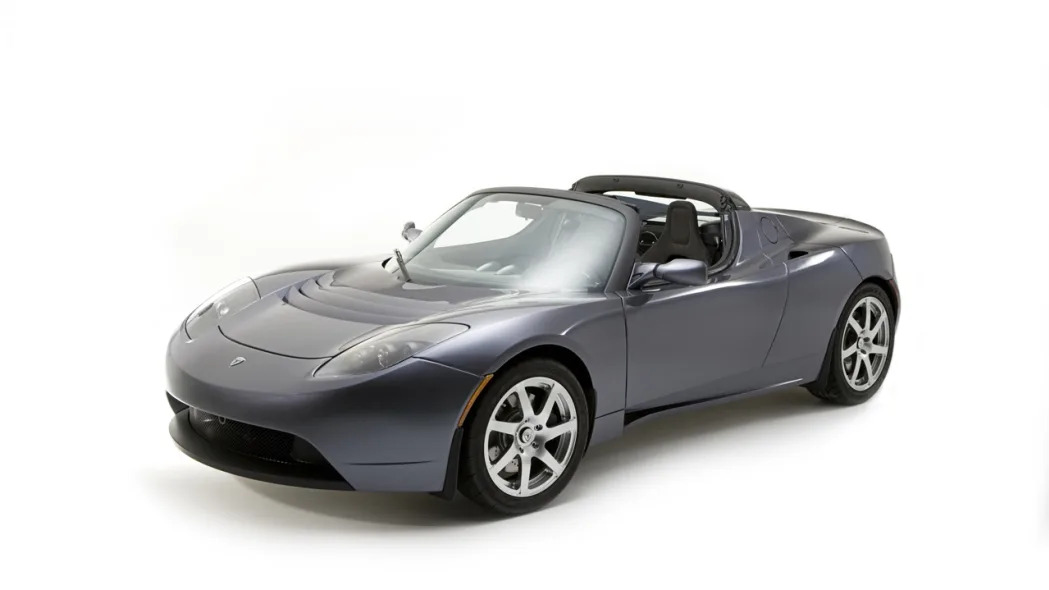Click above for high-res gallery of Tesla Roadster v1.5
Last January we landed an exclusive first drive of the Tesla Roadster. We were impressed, but well aware that the particular two-gear model we drove that wet afternoon wasn't identical to the version set to land in customers' hands later in the year. Last week, we were invited back to briefly test drive a genuine production model with the latest transmission and software updates (aka "powertrain 1.5"). Check out our round-two impressions after the jump.
Tesla Motors invited us to visit its Santa Monica showroom last Friday for a quick sample of the latest Tesla Roadster, which we've dubbed v1.5 because of its new single-speed transmission. While Tesla went through some teething issues with its early two-gear transmission, this one is identical to the "problem solved" production version now being delivered to customers. Mid-mounted in the chassis is a 248-hp electric motor hooked up to the new single-speed fixed-gear Borg-Warner transmission.

The Tesla Roadster is actually built on a Lotus Elise platform. Originating in England, the bare extruded aluminum chassis is shipped to Tesla's brand-new assembly facility in San Jose, California. Upon arrival, it is mated with an electric motor (shaded in gray and located between the rear wheels in the above image), 6,831 individual microprocessor-controlled liquid-cooled lithium-ion battery cells (in purple), some seriously sophisticated electronics (in green), and all of the other go-fast components needed to make a proper sports car. With all 992 pounds of batteries hidden under the custom carbon fiber body panels, the Tesla Roadster weighs about 2,700 pounds.

A twist of the column-mounted key is immediately met with a few tones of acknowledgment from the on-board electronics signaling everything is ready to go. With a light press on the accelerator we glided out of the showroom without a sound. Except for the sheer absence of any audible feedback, the Tesla drives identically to an internal combustion automobile at low speeds (it even "creeps" if the brake is released). We pulled into the afternoon madness of Santa Monica Blvd. and crawled through the traffic as we headed towards the 405 freeway. We found the onramp straight ahead and absent of traffic, so smashed the accelerator pedal to the floor and 276 lb-ft of torque immediately launched us up to highway speeds. We exploded from a standstill to merging with moving traffic in about four seconds.
This is where it gets interesting. Unlike a typical internal combustion engine, the torque from an electric motor is 100 percent available from a dead start. So, while the combustion team needs to get rolling (or drop their clutch) to get in the "power band," the Tesla Roadster is already there. The torque curve is flat too – not dropping significantly until about 9,000 rpm ("redline" on the Tesla is 14,000 rpm). At highway speeds you hit the pedal and your head goes back. It only seems to lose the rush of uninterrupted power above 80 mph or so, when the falling torque curve meets the increasing wall of aerodynamic drag.

Around town, the Tesla drives like an electric go-kart freed from the incarceration of an indoor track. The non-assisted steering is perfectly-weighed once rolling, and the strong brakes boost confidence during short stops. The blinding acceleration made us forget about how we shoe-horned our 6'2" frame into the cockpit, or the absence of visibility past the B-pillar. With a giddy grin on our face, we really didn't care anymore.
Regenerative braking (sending power back to the batteries) mimics the engine compression we've grown accustomed to with "normal" cars. Lift off the accelerator, and the Tesla smartly slows down. We often didn't have to hit the brakes until much later in the traffic pattern. The company is quoting a range of about 220 miles per full charge. As highway driving – sans regenerative braking – uses up more electrons than stop-and-go driving, we think it would be fun to demonstrate that carving canyons in a Tesla is more efficient than driving to Bakersfield.

While the pure electric car sends chills down the rigid spines of traditional gasoline-belching purists, we are happy to report that there is no need to pop tranquilizers anymore. Our short reintroduction to the sporty production Tesla Roadster reveals that the electric car does indeed goose our enthusiast glands, and we can't wait to get our hands on one for an extended First Drive.



Sign in to post
Please sign in to leave a comment.
Continue